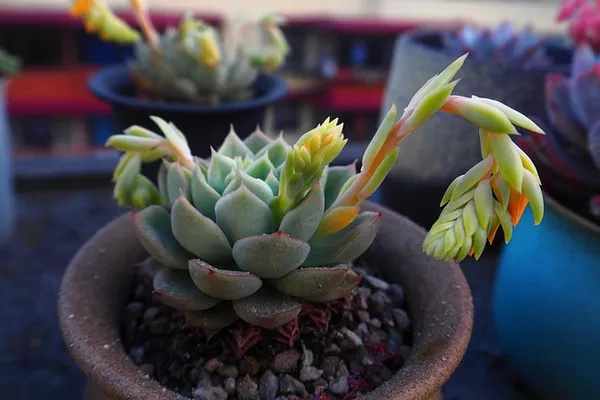Succulents, with their unique ability to store water in their leaves, stems, and roots, have gained immense popularity among indoor gardeners. These resilient plants thrive in dry and arid conditions, making them ideal choices for low-maintenance greenery. However, when the winter season arrives, succulent care requires some adjustments to ensure their health and survival. In this comprehensive guide, we will explore various aspects of winter care for succulents, providing you with valuable insights and practical tips to help you maintain thriving plants throughout the colder months.
1. Understanding Succulent Dormancy
1.1 What is dormancy?
Succulent dormancy is a natural state in which the plant slows down its growth processes and conserves energy during periods of environmental stress, such as winter. It is a survival mechanism that allows the plant to endure harsh conditions and reduces its water requirements.
1.2 How do succulents enter dormancy?
Succulents typically enter dormancy as a response to decreasing daylight hours and cooler temperatures. As fall transitions into winter, the plant’s metabolism slows down, leading to reduced growth and water absorption.
1.3 Why is dormancy important for succulents?
Dormancy allows succulents to conserve energy and survive through the challenging winter conditions. During this period, they require less water and nutrients, minimizing the risk of overwatering and root rot. Additionally, dormancy prepares the plants for healthier and more vigorous growth when spring arrives.
2. Preparing Succulents for Winter
2.1 Adjusting watering routine
As winter approaches, it’s crucial to adjust your watering routine to accommodate the reduced water needs of succulents in dormancy. Water sparingly and allow the soil to dry out completely between waterings. Overwatering during winter can lead to root rot and other moisture-related issues.
2.2 Providing adequate light
While succulents may require less light during dormancy, it is still essential to provide them with adequate brightness. Place your succulents near south-facing windows or supplement natural light with artificial grow lights. Aim for at least six hours of bright, indirect sunlight each day.
2.3 Managing temperature and humidity levels
Most succulents prefer cooler temperatures during winter but are intolerant of freezing conditions. Maintain a temperature range of 50-60°F (10-15°C) for optimal growth. Additionally, avoid placing succulents near cold drafts or heat sources, as extreme temperature fluctuations can stress the plants.
2.4 Protecting from frost and cold drafts
Succulents are susceptible to damage from frost and extreme cold. If you keep succulents outdoors, bring them inside before the first frost. For outdoor succulents that cannot be moved, cover them with frost blankets or place them in a cold frame to shield them from freezing temperatures.
3. Indoor Winter Care for Succulents
3.1 Choosing the right location Select a well-lit area for your indoor succulents during winter. South-facing windowsills or areas with ample indirect sunlight are ideal. Ensure that the location maintains consistent temperatures and avoids cold drafts.
3.2 Adjusting watering frequency and techniques
During dormancy, succulents require less frequent watering. Allow the soil to dry out completely between waterings to prevent overwatering, which can lead to root rot. Use the “soak and dry” method: thoroughly water the plant until excess water drains from the bottom, then wait for the soil to dry out before watering again.
3.3 Supplementing with artificial lighting
If natural light is limited, supplement it with artificial grow lights. Choose full-spectrum LED grow lights and position them 6-12 inches above the succulents. Provide 10-12 hours of artificial light per day to ensure sufficient brightness for healthy growth.
3.4 Maintaining optimum temperature and humidity levels
Maintain a temperature range of 60-70°F (15-21°C) during the day and slightly cooler at night for indoor succulents. Avoid placing them near heat sources, such as radiators or vents, as excessive warmth can cause damage. Monitor humidity levels and avoid using humidifiers near succulents, as they prefer drier environments.
4. Outdoor Winter Care for Succulents
4.1 Preparing outdoor succulents for winter
If you live in a region with frost or freezing temperatures, it’s best to bring outdoor succulents inside before the first frost. Before transitioning indoors, inspect the plants for pests or diseases to prevent infestations indoors.
4.2 Providing insulation and protection
For succulents that cannot be moved indoors, provide insulation and protection from freezing temperatures.
conclusion
Remember that these guidelines are general recommendations, and specific care requirements may vary depending on the type of succulent you have. It’s always beneficial to research and understand the specific needs of your succulent species to provide the best care during winter.


